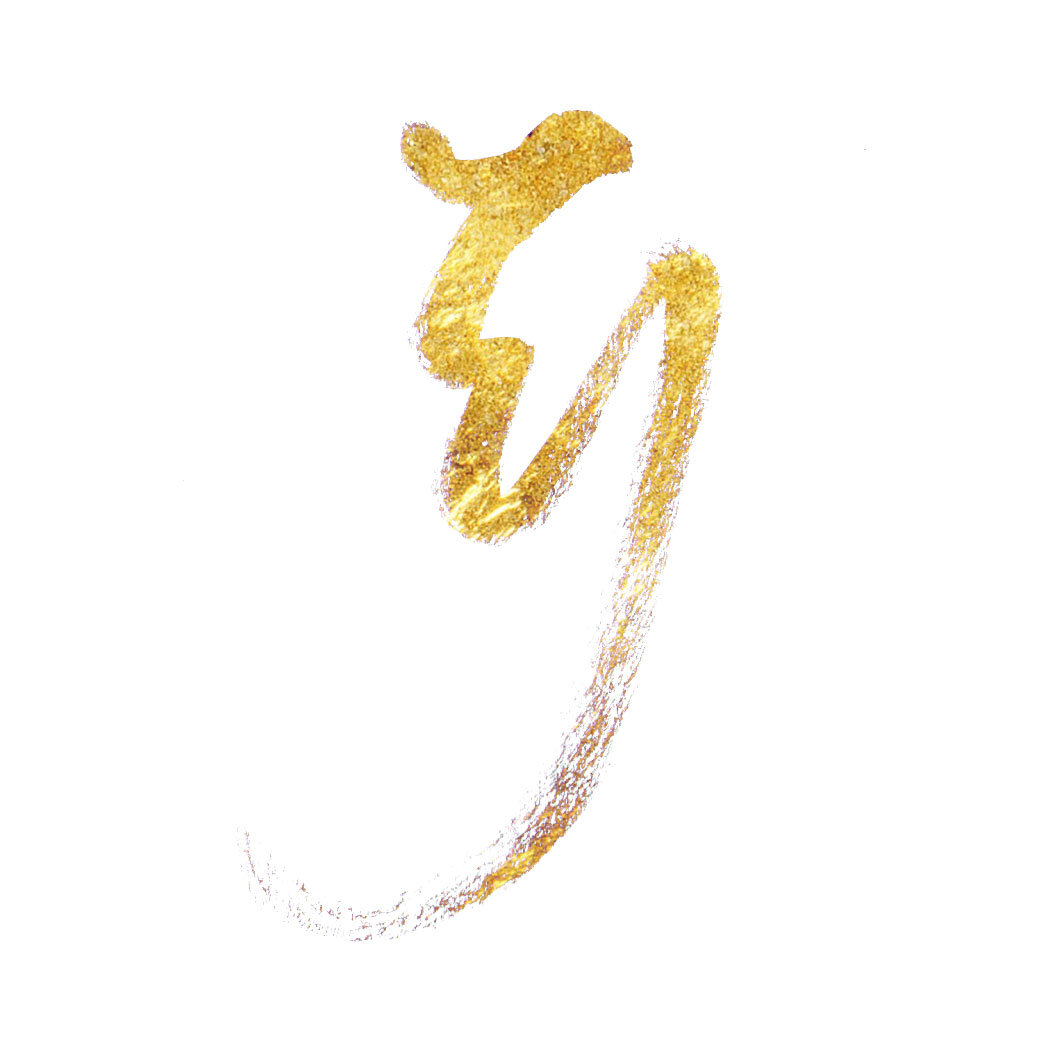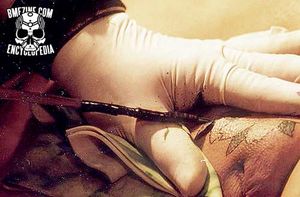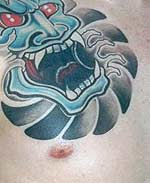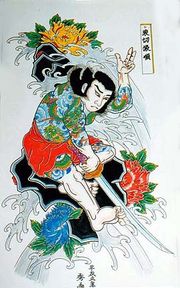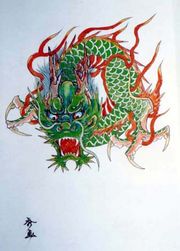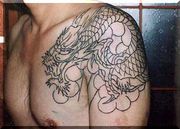Tebori (手彫り), Traditional Japanese Tattoo technique, Traditional Japanese Tattoo
:: From BME, here.
Tebori (手彫り) is traditional Japanese hand tattooing. Many artists praise it for its ability to create subtle gradations of tone that are difficult to achieve with a machine. Adam Guy adds:
- The word tebori comes from te meaning 'hand' and hori or horu, 'to carve, sculpt or inscribe.' The word used to describe the technique of tattooing that arose in the late 18th and early 19th century in Japan, with the appearance of professional tattoo artists in the capital city of Edo.
- Steel needles, usually of greater diameter and steeper shoulder than those used in the West, are arranged in rows, singly or stacked, and are tied to a long handle of bamboo. This tool is held in the right hand, with the fingers of the left used to spread the skin to be tattooed. The shaft of the tebori tool rests on the thumb of the left hand and the needles inserted by the force of forward movement of the right arm of the tattoo artist. Unlike many other forms of hand-tattooing in Asia such as tatau or moko, no assistants are required for tebori.
- With greater understanding of cross contamination and bloodborne pathogens, in modern times the needle groups used for tebori are detachable from the tool, so they may be single use, and the handle is generally made from steel or titanium, allowing it to be autoclaved.
- In Japanese, tebori is the opposite of kikaibori, or tattooing with a Western-style electric machine.
Contents |
Styles
Tsuki-bori
Tsuki-bori is a methodology of traditional Japanese hand tattooing that, according to the records of the Tokai Tattoo Club of Japan, is a reference to the "thrust" method of tattooing based in Osaka and western prefectures.
Hane-bori
According to the Journal of the Tokai Tattoo Club of Japan, hane-bori is a reference to "sweep-up," a method of tebori hand tattooing rhythms employed by artists of Tokyo and the Eastern Areas of Japan.
Often, the tsuki-Bori method is looked upon as a simplistic method of tebori tattooing, less difficult to master than hane-bori.
Tebori Design
Tebori tattoos contain rich, multi-layered pieces of art, with each aspect contributing to the whole design.
- Bokashi
- the fading of black work used to graduate shading in traditional, often used in clouds and sword swipes.
- Kakushi-bori
- sometimes referring to tattooing near the armpits, on the inside of the thigh or in the private or "secret" places on the body, also the hiding of words in the petals of flowers.
- Kebori
- fine lines, such as, but not limited to, hair.
- Keshow-bori
- secondary images in order to support the other image.
- Nijuw-bori
- when an artist tattoos a traditional character in tebori that was tattooed, the tattoos of that character must be correctly portrayed in the received tattoo.
- Nuki-bori
- to tattoo only the main image without the support of keshow-bori.
- Suji-bori
- outline of a tattoo, suji meaning “line.”
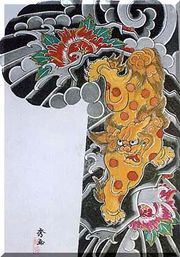
Keshow-bori and bokashi with kara-jishi |
Shakki
Shakki is the sound of tebori tattoo, referring to the sound when needles puncture skin. Tattooing by hand in Japan should be done by puncturing the skin with the needles gently, adjusting the strength ofthe hands. Human skin is very soft and elastic. As the needles leave the skin, one can hear the sound, shakki. If one tattoos smoothly, you can hear a rhythmical sound like "sha, sha, sha;" thus, shakki.
Related Articles
:: Also See Irezumi on wikipedia
Recommended Japanese Tattoo Related Post Oriental Irezumi and Western Tattoing in Contemporary Japan
